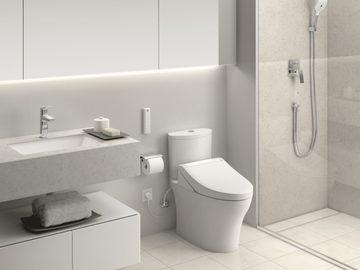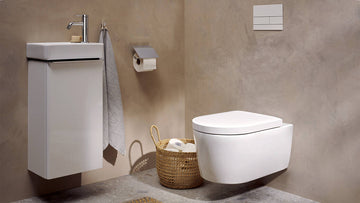Water conservation is more critical now than ever before. For those in the Industry QA sector, the focus on toilet conservation tips can lead to significant savings and sustainability. Toilets consume nearly 30% of household water usage, making them a prime target for conservation efforts. Implementing effective strategies can not only preserve this precious resource but also reduce your water bills substantially.
In this article, we'll delve into toilet conservation tips that can help you save water and money. These tips will address everything from upgrading your fixtures to adopting new technologies, all designed to improve water efficiency without sacrificing performance. Let's explore these strategies in detail and see how they can be applied in various settings.

Understanding the Importance of Toilet Conservation
Before diving into specific tips, it's essential to understand why toilet conservation is so crucial. Toilets are a major source of water usage in both residential and commercial settings. According to the EPA, the average family can save up to 13,000 gallons of water annually by upgrading to water-efficient toilets. This not only translates to lower water bills but also helps in conserving the environment by reducing water waste.
Upgrade to High-Efficiency Toilets
One of the most effective toilet conservation tips is to upgrade your existing toilets to high-efficiency models. These toilets use significantly less water per flush compared to traditional models. Retrofits for water-saving toilets are also available, which can convert your existing fixtures into more efficient ones without the need for a complete replacement.
Consider Dual-Flush Systems
Dual-flush toilets offer two flushing options: a full flush and a partial flush, allowing users to select the appropriate amount of water needed. This simple mechanism can lead to substantial water savings over time. For those interested in the latest advancements, innovations in water-efficient toilets are continually improving, making this an area worth exploring.
Implement Regular Maintenance Checks
Regular maintenance is key to ensuring your toilets operate efficiently. Inspecting for leaks and addressing them promptly can prevent unnecessary water wastage. Leaks can be silent, but they often result in a significant increase in water usage. A simple way to check for leaks is by adding a few drops of food coloring to the toilet tank and waiting to see if it appears in the bowl without flushing.
Use Water-Saving Accessories
There are numerous accessories available that can aid in water conservation, such as water-saving toilet flappers and adjustable fill valves. These accessories are designed to optimize water flow and reduce consumption. Additionally, smart water-saving toilet technology is revolutionizing the industry by offering innovative solutions for monitoring and controlling water usage.
Adopt Behavioral Changes
Sometimes, the simplest changes can have the most significant impact. Encouraging behavioral changes, such as not using the toilet as a wastebasket, can reduce unnecessary flushing. Educating staff and family members about the importance of water conservation can foster a culture of sustainability.
Install Water Sensors
Installing water sensors can provide real-time data on water usage, helping identify patterns and areas for improvement. These sensors can be particularly useful in commercial settings, where monitoring multiple toilets can be challenging. More insights can be found in articles discussing water sensors with adhesive, which are easy to install and effective in tracking water usage.
Conclusion
Implementing toilet conservation tips is not just about saving water; it's about being responsible stewards of our resources. By adopting the strategies outlined in this article, you can contribute to a more sustainable future while enjoying the financial benefits of reduced water bills. The changes may seem small, but their collective impact is significant.

FAQ
What are high-efficiency toilets?
High-efficiency toilets are designed to use less water per flush compared to traditional models, making them a key component in water conservation efforts.
How can I check for toilet leaks?
To check for toilet leaks, add a few drops of food coloring to the tank and wait to see if the color appears in the bowl without flushing. If it does, you have a leak.
Are dual-flush systems worth the investment?
Yes, dual-flush systems can significantly reduce water usage by allowing users to choose between a partial or full flush, making them a worthwhile investment for conservation.






